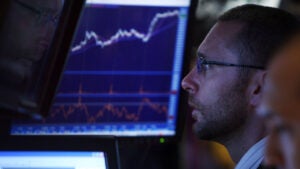Santa Claus rally in stocks: What it means for investors

As the year winds down, you’re likely to hear market commentators talk about whether investors should expect a “Santa Claus rally” in the stock market. But what exactly is a Santa Claus rally and what’s the origin of the phrase?
Here’s what investors should know about a Santa Claus rally in the stock market.
What is a Santa Claus rally?
A Santa Claus rally is the tendency for the S&P 500 index to increase over the final five trading days of December and the first two trading days of January. The term was first coined in the 1970s in the Stock Trader’s Almanac.
Today, market commentators may refer to a Santa Claus rally when the stock market rises during the month of December, particularly around the Christmas holiday.
Since 1950, the S&P 500 has risen 1.3 percent on average over the final five trading days of December and the first two of January, according to the Stock Trader’s Almanac. The Santa Claus rally has occurred in 59 years since 1950, including 2022-23 when the S&P 500 rose 0.8 percent over the seven trading days.
What causes a Santa Claus rally?
The precise cause for a Santa Claus rally is difficult to identify, with different factors impacting markets from one year to the next. Some of the reasons given for a year-end rally include the general optimism around the holidays, people investing holiday bonuses and an increased influence from individual investors.
What a Santa Claus rally means for investors
Long-term investors, such as those saving for retirement, can generally ignore whether or not the stock market has a Santa Claus rally. Market performance over seven trading days is barely a blip over the course of an investing life, so trying to react to a potential rally is typically a mistake.
However, short-term traders may take more action in the hopes of positioning themselves for a rally. They may buy stocks or stock funds ahead of the end of the year and look to sell them once a rally has taken place.
Some market observers may also make forecasts based on whether or not a Santa Claus rally occurs. For example, the seven-day trading period saw declines in 2000 and 2008. The tech bubble ended up bursting in early 2000, and 2008 produced one of the worst years for the stock market in decades as the economy plunged into recession amid the subprime mortgage crisis.
Bottom line
A Santa Claus rally in the stock market refers to the tendency for the S&P 500 to increase in the final five trading days of December and the first two days of January in the new year. A Santa Claus rally has occurred 59 times since 1950, according to the Stock Trader’s Almanac. Some market commentators may casually refer to a Santa Claus rally at any point in December.
Why we ask for feedback Your feedback helps us improve our content and services. It takes less than a minute to complete.
Your responses are anonymous and will only be used for improving our website.






